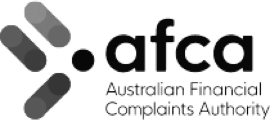Supply chain impacts on working capital have resulted in businesses carrying more inventory than historical levels to meet customer demands. This is having an adverse effect on their working Cash Conversion Cycle. Here’s a previous post we wrote about the early signs to look out for when managing your inventory levels.
Eric Gantier, President, Global Engineering, Manufacturing and Energy Sector, DHL, says that companies face three critical challenges over the coming months. They include:
- Supplying and supporting their products
- Controlling their costs
- Responding to shifts in customer behaviour.
“The pandemic caused a huge amount of disruption, with shortages of critical components or inventory stranded in the wrong places,” he says. “Right now, the supply chain is at the top of the agenda for our customers. That means supply chain leaders are under pressure to get things right, but they also have opportunities to make the changes that could transform their performance.”*
Stocking up on inventory and its effects on the Cash Conversion Cycle
The Cash Conversion Cycle (CCC) tells a business owner the average number of days it takes to purchase inventory, and then convert it to cash.
The CCC time depends on how a company finances its purchases, how it allows customers to pay (credit and the collection period), and how long it takes to collect.
A lower CCC is an indicator of a faster inventory-to-sales process that is the time it takes a business to purchase stock and how long it takes to collect the money once a customer pays for it. In contrast, a higher CCC indicates a slower process.
Businesses have had to buy additional stock of inventory to meet the demands of their customers. As a result, their cash is tied up with unsold goods, putting pressure on the currently available funds to the business.
Three ways to improve the Cash Conversion Cycle
Businesses will continue to experience high inventory levels until the issues with the supply chain smooth out, which has been reported to be in 2023*. However, the positive news is that businesses can focus on other parts of their cash conversion cycle to improve their cash flow.
1.Control and reduce your Debtor Days
Debtor Days show the average number of days it takes a business to receive payment from customers for invoices issued to them. If you have a high number of debtor days, this means that your business has less cash, impacting other things your business could be investing in to grow.
Businesses can control the number of days it takes for debtors to pay their invoices by getting the debtor days back to normal. This streamlining may not always be possible, especially with very large retailers. However, trying to negotiate a reduction in your payment terms from 90 days to 45 days can hugely benefit your cash flow cycle. This will help businesses to achieve a more robust cash conversion cycle.
2.Improve your inventory turnover
A higher or quicker inventory turnover decreases the cash conversion cycle. Thus, a better inventory turnover is a positive for the CCC and the business’s overall efficiency.
However, this will be challenging as we see more businesses sitting on their inventory due to supply chain issues.
3. Negotiate new supplier terms
Extending creditor days on hand from 30 days end of month to 45 days can provide your business with cashflow benefits. Review all your key creditors and identify those whereby your strong historical relationship could translate into more favourable terms for your business.
If you want to speak directly with a trusted and highly experienced credit assessor to discuss how a loan can help your cash conversion cycle, please call Banjo on 1300 22 65 65. Alternatively, please email customerservice@banjoloans.com
How do you know which finance option is best suited to your circumstances? To learn more about the main types of financing available to businesses, download a copy of Banjo’s free ebook.
* “Delivered. The Global Logistics Magazine.” Jan, 2021. https://www.dhl.com/content/dam/dhl/global/delivered/documents/pdf/dhl-delivered-issue-1-2021.pdf


